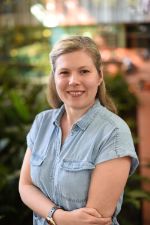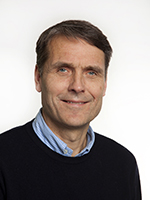One of the funded projects is within the category “Researcher project for young talents”, which is intended to give young researchers the opportunity to pursue their ideas and lead a research project. The remaining projects are within the category “Researcher project for scientific renewal”, which is intended to support scientific renewal and development in research.
– The funding allocations from the Research Council of Norway, RCN, in this round demonstrate the breadth of solid, advanced and competitive research at the Institute. Congratulations both to the applicants and to their research groups, Head of Department Dag Kvale comments.
Researcher project for young talents
- Alf Håkon Lohsen Lystad
DETECT and PROTECT – surviving insults to intracellular compartments
Researcher project for scientific renewal
- Gunn-Helen Moen
Developing and Applying New Statistical Models to Test for Transgenerational Effects of Environmental Exposures in Pregnancy - Tobias Kaufmann
Mind the gap: fusing brain imaging and genetics data to reveal mechanisms underlying psychiatric disorders - Espen Melum
Multiomic 4-dimensional identification of novel treatment targets for bile duct inflammation - Ole Andreassen
Decoding mental disorders into patterns of polygenic pleiotropy - Per Morten Sandset
Cell-based therapy for inherited bleeding disorder

Alf Håkon Lohsen Lystad
"DETECT and PROTECT – surviving insults to intracellular compartments"
In the DETECT and PROTECT project, Lystad will find out more about how our cells protect themselves against invaders such as bacteria and viruses, so-called pathogens, and harmful substances taken up by the cell in membrane vesicles.
– CASM is a common response from cells when pathogens or harmful substances invade them. Small proteins then bind to the membranes in the cell harboring the invaders, and prepares the cell to respond to the threat, Lystad explains.
Defects in the CASM response weakens our defence against pathogens and makes us susceptible to auto-inflammatory and autoimmune disease.
– Even so, the mechanisms through which CASM protects against harmful invaders remains unknown, Lystad says.
The funding allocation from the RCN allows the young researcher to pursue his own ideas and to build his own career path.
– I am terribly happy and proud. I look forward to dig into the questions that I focused on in the application and to advertise the postdoc position so that we can get started, he concludes.

Gunn-Helen Moen
"Developing and Applying New Statistical Models to Test for Transgenerational Effects of Environmental Exposures in Pregnancy"
In this project, Moen and colleagues will investigate whether environmental factors that mothers are exposed to during pregnancy have an effect on not just their own child but also their grandchild. Environmental factors that the researchers will look at are, among others, smoking and different nutritional factors.
– We hope to find out whether we can inherit the effects of environmental factors across several generations, Moen says.
She believes that this research is important because we simply do not know much about our ability to inherit these effects across generations.
– If it turns out that exposure to certain environmental factors during pregnancy can have negative consequences across generations, this will be important information to consider when we develop recommendations to pregnant women, she explains, and adds:
– We are very pleased with this allocation and look forward to work on this project.

Tobias Kaufmann
"Mind the gap: fusing brain imaging and genetics data to reveal mechanisms underlying psychiatric disorders"
The BRAINGAP project aims to reveal the genetics underlying brain structure and function, and to determine when in life genes differentially affect the brain. The gained knowledge will be used to investigate mechanisms underlying the multifaceted nature of psychiatric disorders.
– Psychiatric disorders are complex brain disorders and are among the main contributors to morbidity and disability globally. Unfortunately, our understanding of the pathophysiology is still limited, Kaufmann explains.
BRAINGAP seeks to contribute to a mechanistic understanding from the gene to the brain level.
– In order to disentangle the complexity underlying psychiatric disorders, we need to understand which gene variants affect the brain, as well as where, when and how they do so, Kaufmann says, and adds:
– I'm really grateful to the Research Council of Norway for supporting these endeavours.

Espen Melum
"Multiomic 4-dimensional identification of novel treatment targets for bile duct inflammation"
In this project, Melum and colleagues will map inflammatory processes in the bile ducts with tissue-based sequencing and 3D immunohistochemistry that they will integrate and analyse with advanced bioinformatics.
– There are few treatment options for inflammatory diseases in the bile ducts like primary sclerosing cholangitis. It is therefore important to map the inflammatory processes to find new points of attack for treatment, Melum says, and adds:
– I am very grateful for the allocation from the RCN. It makes a completely new project packet that makes use of new technology possible in my group.

Ole Andreassen
"Decoding mental disorders into patterns of polygenic pleiotropy"
In this project, Professor Andreassen and colleagues will investigate causal relationships in mental disorders like depression and bipolar disorder. They will especially focus on how symptoms and characteristics in mood disturbances occur, and look at how genetic factors and environmental factors interact.
– We will use large data sets from biobanks and population studies in combination with new analytic tools like machine learning, Professor Andreassen explains.
Severe depression and bipolar disorder are among the illnesses that have the largest disease burden globally, but we know little about their cause. It is therefore difficult to develop better treatment methods.
– Even so, depressive symptoms are also part of other mental disorders. In addition, slight mood swings are part of people’s everyday life. This is therefore a common human phenomenon, the researcher points out.
– It is a great pleasure to receive funding to work on a project that we have planned and developed over several years. We look forward to hire competent new researchers who are interested in using large data sets in analysis to understand mental phenomena, Professor Andreassen concludes.

Per Morten Sandset
"Cell-based therapy for inherited bleeding disorders"
– In this project, we will build the foundations for the development of cell therapy as a new treatment method for hereditary hemophilia, Sandset explains.
Hereditary hemophilia comprises a group of hereditary illnesses characterised by a defect in the blood’s ability to clot or to coagulate. This is caused by the lack of a substance called a coagulation factor. Today, the illness is treated by adding a concentrate from the missing coagulation factor to the blood intravenously. In the present study, the researchers will look at hereditary hemophilia where the patient lacks coagulation factor VII.
– In the absence of coagulation factor VII, frequent injections are required in certain cases due to the short half-life in the blood. This affects the quality of life of the patients and is also very expensive as each injection costs up to NOK 25 000, says the researcher.
There is also a risk of developing antibodies to added coagulation factor VII, which may make treatment more difficult.There is therefore a great need to find new treatment methods.
– This allocation is very important to us. Cell-based treatment methods outside the cancer area are in the development phase and the funding for this project makes it possible for us to be among the first contributors in this area, Sandset concludes.
Sandset, who is Vice-Rector for research and innovation, will lead and conduct the study in close collaboration with Maria Eugenica Chollet, posdoc at Oslo University Hospital, and Benedicte Stavik, acting group leader at Oslo University Hospital.
